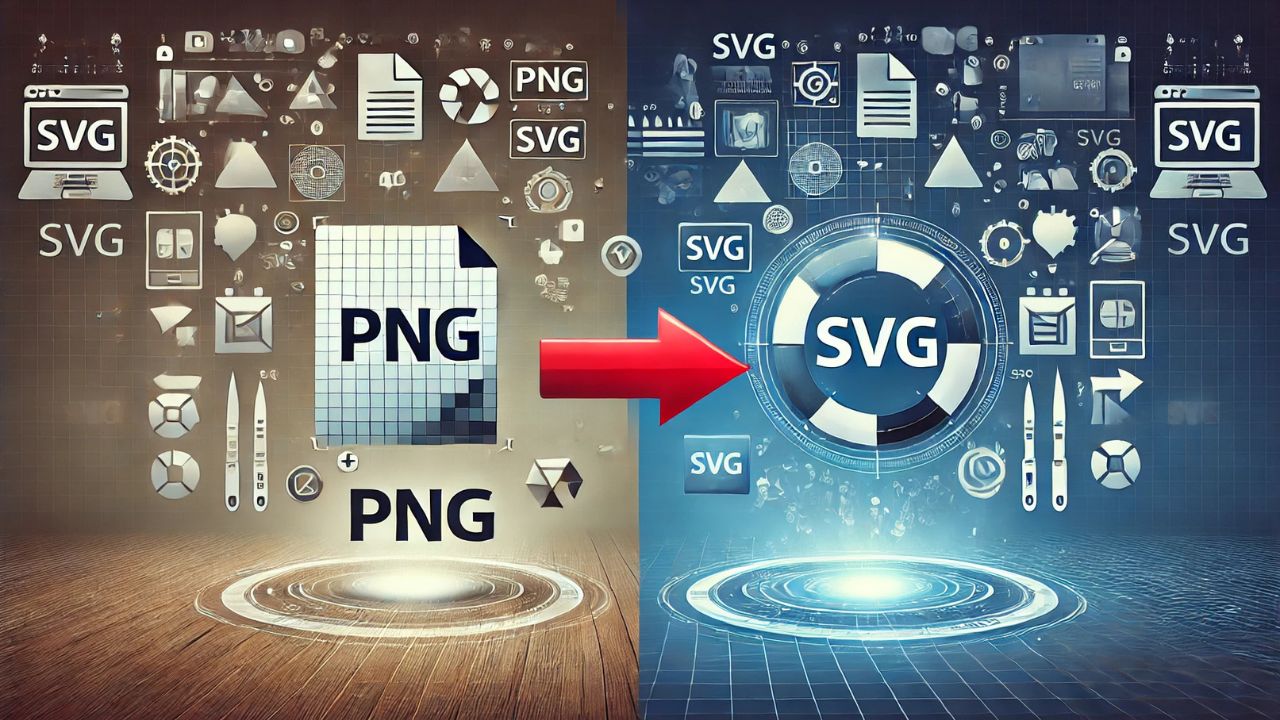PNG to SVG – Convert PNG files to SVG Online for Free
What is PNG to SVG?
PNG to SVG is an online conversion tool that allows users to transform PNG images into scalable vector graphics (SVG). PNG files are raster-based, meaning they lose quality when resized. In contrast, SVG files use mathematical equations to create images, ensuring sharpness at any size. This conversion is essential for designers, developers, and anyone working with digital graphics.

Why Choose PNG to SVG?
1. Scalability Without Quality Loss
Unlike PNGs, SVGs can be resized indefinitely without pixelation. This makes them ideal for logos, icons, and illustrations.
2. Lightweight and Efficient
SVG files are smaller than PNGs, which helps improve website loading speed. Faster websites rank better on search engines and provide a superior user experience.
3. Editable in Vector Software
SVGs can be edited in programs like Adobe Illustrator, Inkscape, and CorelDRAW. This allows designers to modify elements easily.
4. SEO and Accessibility Benefits
Search engines can index SVGs, unlike PNGs. This means your graphics can appear in search results, improving visibility. Additionally, SVGs support accessibility features, making them more inclusive.
What Happened to PNG to SVG?
Many online PNG to SVG converters have evolved to include AI-driven vectorization, batch processing, and enhanced customization. Some outdated converters have shut down due to a lack of updates or low demand. However, plenty of high-quality tools remain available.
Any Alternatives to PNG to SVG?
1. Online Image Vectorizer Tools
- Vectorizer.io – AI-powered vector conversion with high accuracy.
- Autotracer.org – Free online tool with multiple output formats.
- Picsvg.com – Simple and user-friendly interface for quick conversions.
2. Professional Software
- Adobe Illustrator – Industry-leading vector editing software.
- Inkscape – Free and open-source alternative with advanced features.
- CorelDRAW – Popular choice for professionals working with vector graphics.
3. Command-Line Tools for Developers
- Potrace – Converts bitmaps into scalable vector files.
- ImageMagick – Supports PNG to SVG conversion with scripting capabilities.
FAQs
1. Is PNG to SVG conversion free?
Yes, many online tools offer free PNG to SVG conversion. However, premium tools provide higher accuracy and advanced editing features.
2. Can I convert a complex PNG to SVG?
Yes, but results vary. Simple images with clear lines work best. AI-powered converters handle complex images better.
3. Do SVG files work on all browsers?
Yes, modern browsers like Chrome, Firefox, Edge, and Safari fully support SVG files.
4. Can I use SVGs for printing?
Absolutely! SVGs provide excellent print quality because they are resolution-independent.
5. What’s the best tool for high-quality PNG to SVG conversion?
For free conversions, try Vectorizer.io or Picsvg.com. For professional use, Adobe Illustrator offers the best results.
